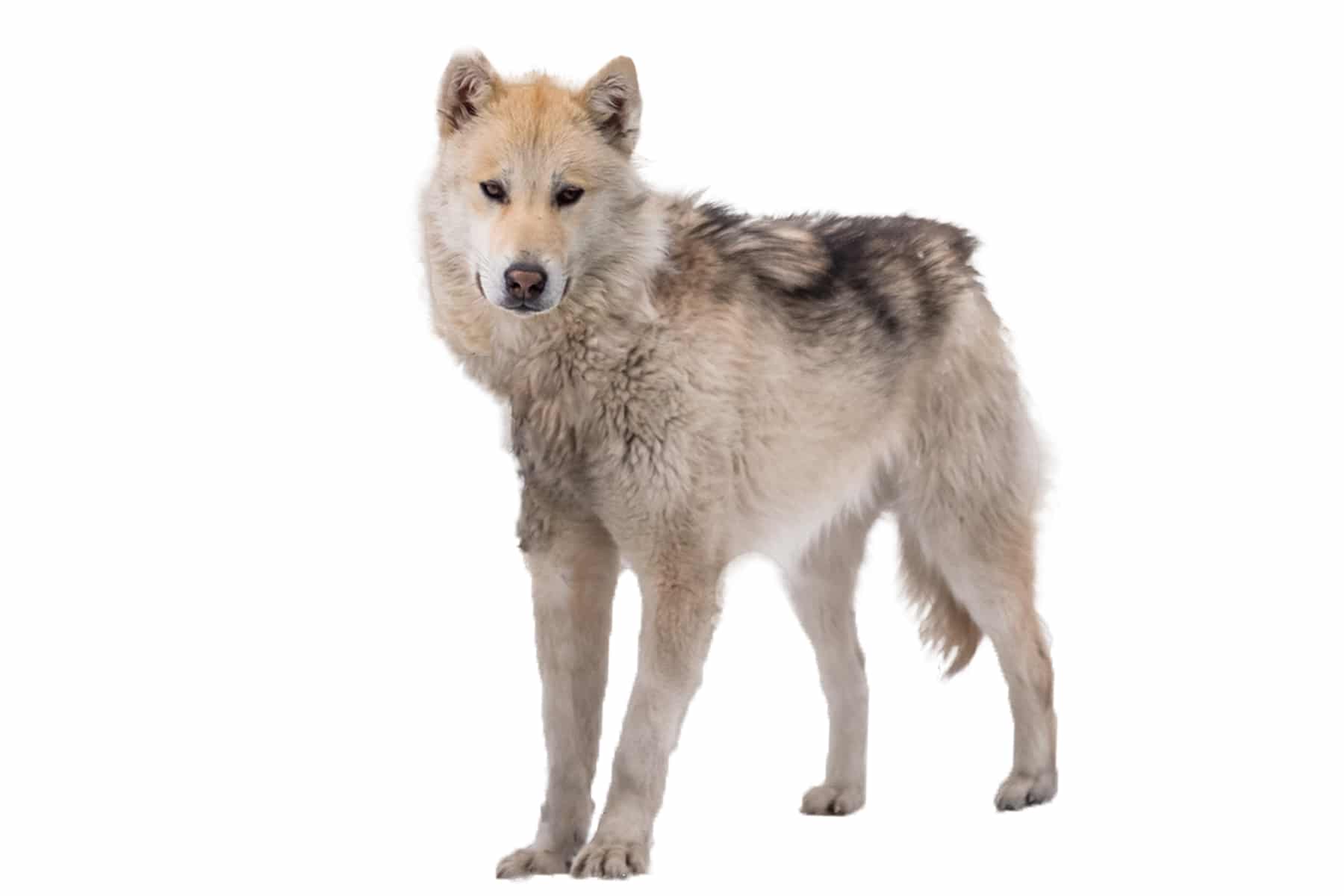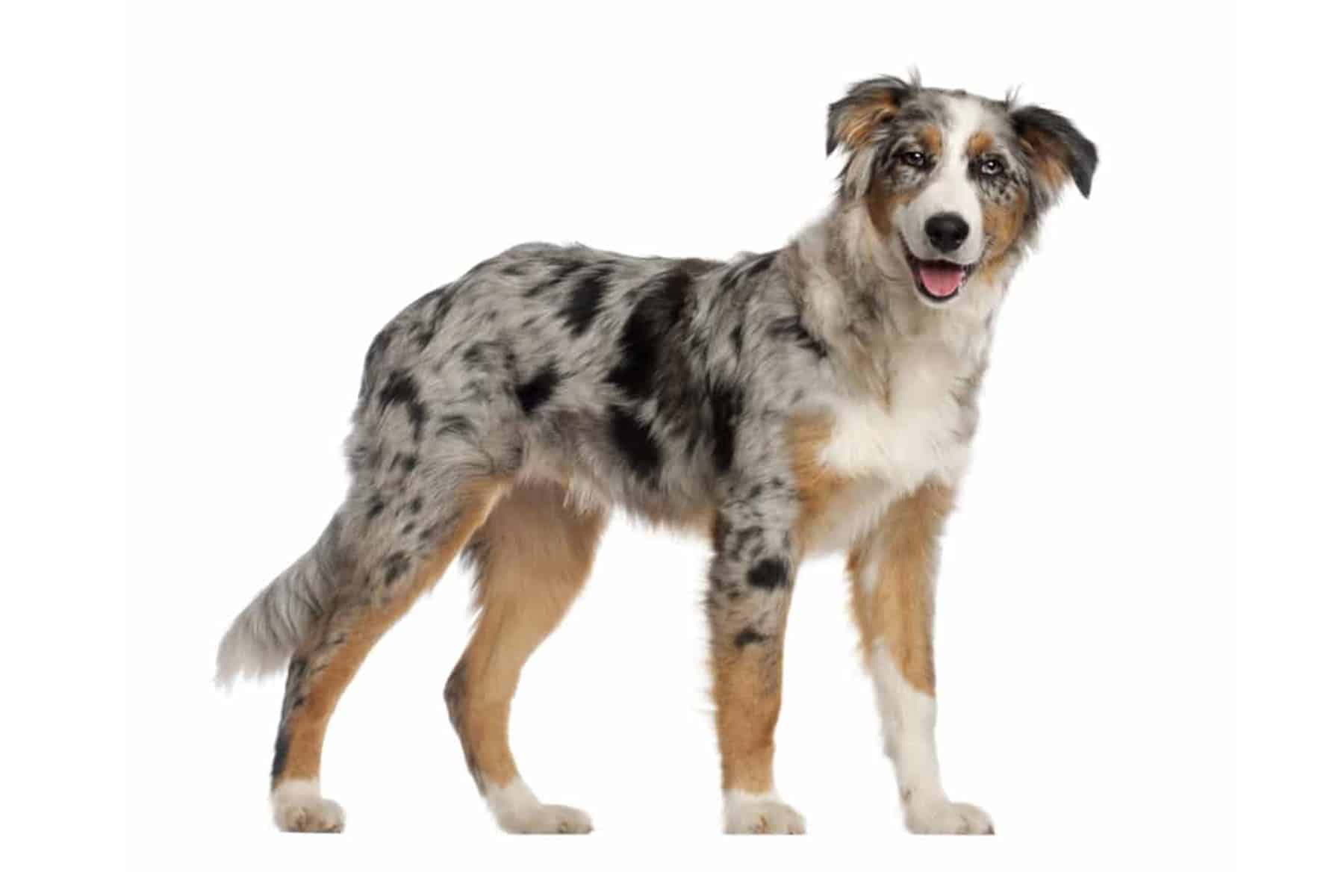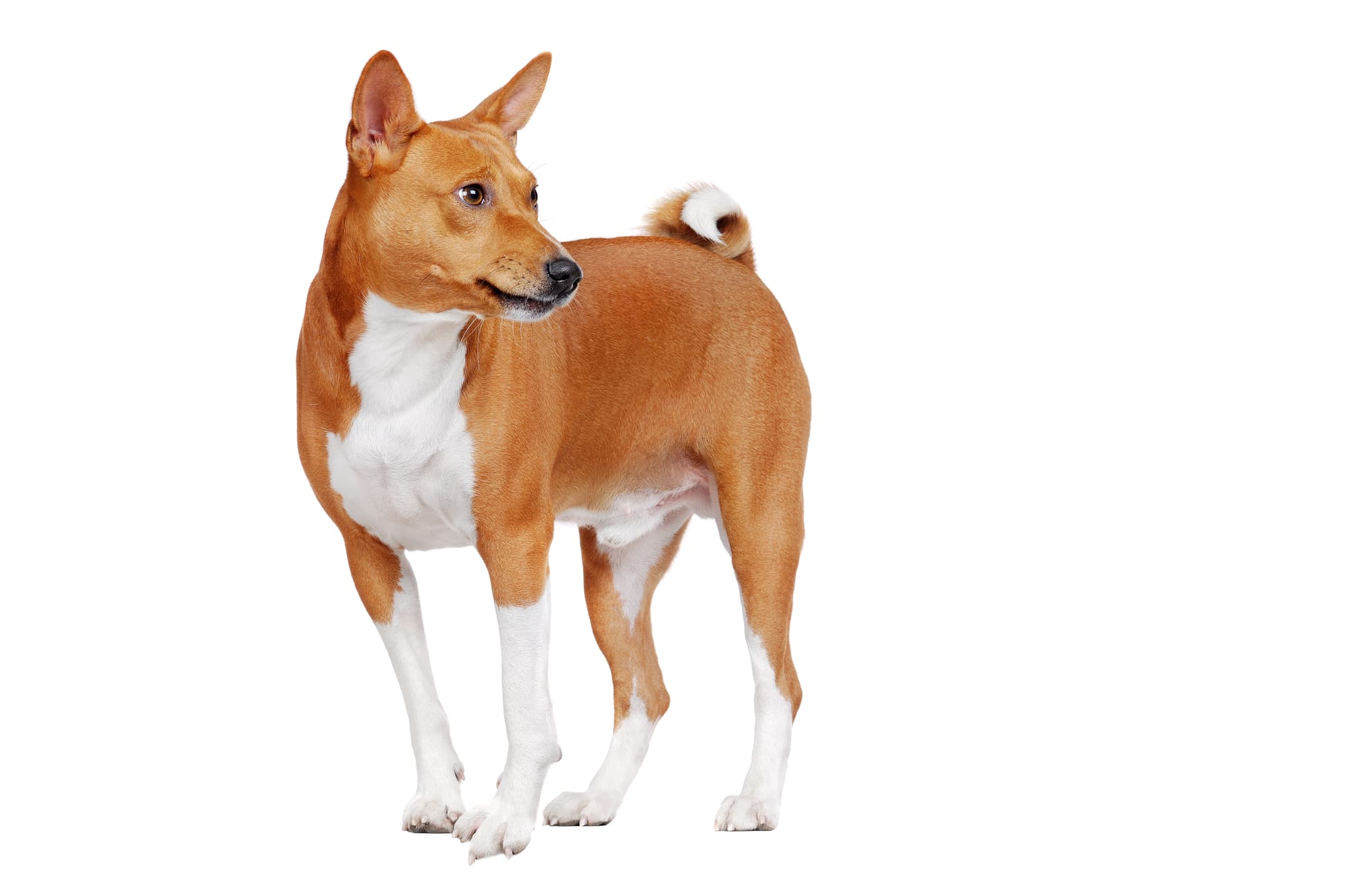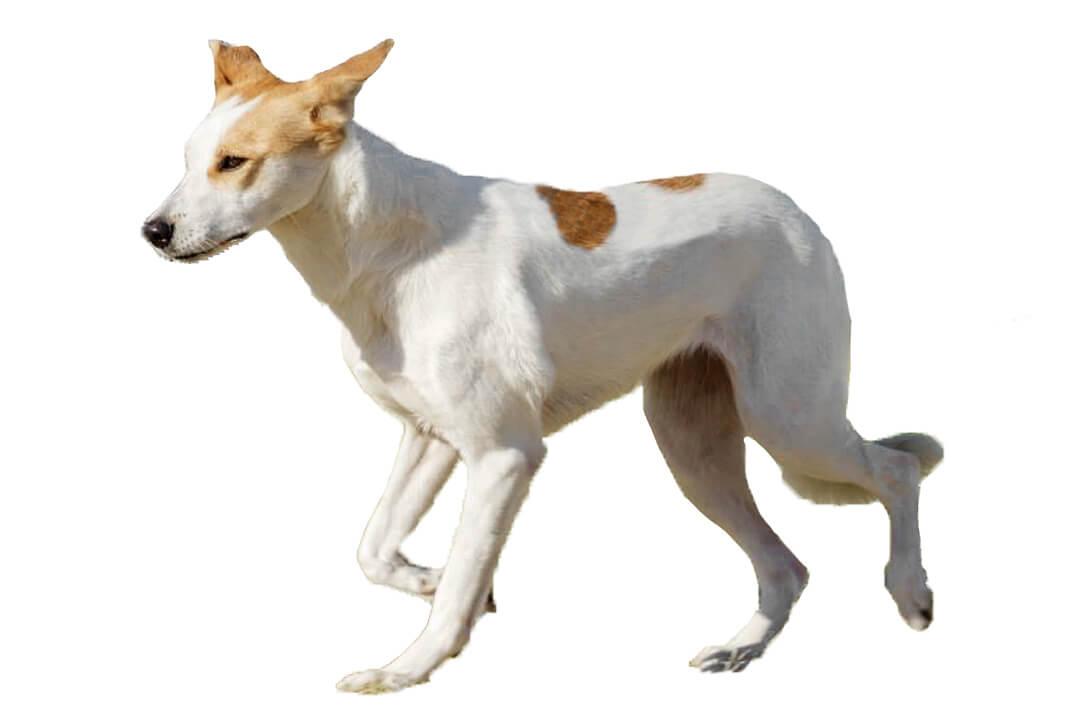Karelian Bear Dog



Temperament:
He loves to go hunting for elk or bear with his human in the Scandinavian forests. He roams the thicket on his own, always on the lookout for a scent. The Karelian bear dog, also known as the "Karjalankarhukoira" or "Björnhund", knows what it wants. It is not a beginner's dog. This active dog belongs in the hands of an experienced hunter.
Characteristics
The size varies between 52 cm for females and 57 cm for males, depending on gender. The Karelian Bear Dog is a typical Spitz with a robust and strong build. The head is wedge-shaped when viewed from the front. If you look at the head from the side, you can see that the bridge of the nose is straight and the stop is only slightly pronounced.
With its black nose, the hunting dog can pick up and follow the finest scents. The pointed, high-set ears stand upright, ready to pick up even the slightest sound of the game. With relatively small but expressive eyes, it looks at you attentively. The strong musculature is clearly visible on the chest, neck and shoulders. The Karelian bearhound carries its tail curled over its back, like all pointed dogs.
In addition to the body shape, the breed can also be recognized by its coat markings. The animals are black with white markings on the neck and chest. The paws and the tip of the tail are also white. A fine white blaze from the forehead to the nose and a white ring around the neck are permitted. The colors must be clearly separated from each other. Black patches in the white areas are undesirable.
Originally, the Karelian Bear Dog came in several colors. When breeding began, only black and white animals were used for breeding.
The top coat is short, dense, rough and close lying. It is slightly longer on the neck, back and hind legs. As an adaptation to the northern climate, the dogs have developed a soft, dense undercoat.
Karelian bearhounds are strong in character and even-tempered. When hunting, they move silently through dense undergrowth and track down any game. These powerhouses are brave enough to take on bears and moose. They are never aggressive towards humans. Above all, the Karelian Bear Dog is always friendly and loyal to "its" people. It is suspicious of strangers.
In the Scandinavian countries there is a working test for this breed.
Coat care:
Shedding:
Energy level:
Trainability:
Children suitable:
The right food
When choosing food, make sure that it contains high-quality ingredients, is balanced and meets your dog's requirements. Age, size or weight, activity and health status play an important role. You should follow the manufacturer's recommendations for the amount of food.
Treats should only be fed in moderation and deducted from the basic diet to avoid obesity.
Puppies can be fed 4-6 times a day. The number of meals should be gradually reduced to 1-2 per day until the dog is fully grown. A rest period should be observed after meals.
Fresh drinking water should be available at all times.
It is best to feed a special food for performance dogs as long as you are very active with them or go hunting regularly. This way, your four-legged friend gets the amount of calories it needs. All other ingredients such as vitamins and minerals are included as required.
Health & Care
The shorthair requires little grooming. You should only brush it more often during the change of coat to remove loose hair from the undercoat.
The Karelian Bear Dog is an active and independent dog. It is difficult to persuade him to stay in the yard. In order to follow a tempting-smelling scent, it will effortlessly jump over a 2-meter-high fence. In his home country, it can happen that the stubborn dog disappears into the forest and only reappears days later. Of course, this is not possible in Germany.
The breed was bred to track down game over long distances on its own and then bark at it. The barking irritates the game and keeps it where it is. At the same time, the hunter is informed of the game's whereabouts.
You must be prepared for your dog to stray far, far away from you when you are out walking. This can be dangerous if he crosses roads unsupervised. You must keep him on a lead consistently.
His barking behavior makes him a good watchdog. Any stranger or other animal is immediately barked at loudly.
The Karelian Bear Dog is constantly active and has a great urge to move. Keeping them indoors is to be avoided at all costs. Although it can be kept indoors, it needs plenty of space in a yard or on a piece of land. To keep him properly occupied, give him something to do. Hunting is ideal for this courageous fighter.
The Karelian Bear Dog is not suitable as a companion or family dog. A life in the city does not suit its nature either. It needs extensive terrain to be able to let off steam physically.
It is often aggressive towards other dogs and tends to get into fights. If you want to train a Karelian Bear Dog, you need a lot of patience, even more experience and a steady hand.
Suitable accessories
The basic equipment includes a food bowl and a water bowl.
Your dog needs a resting place where he can retreat to. Regardless of whether your dog lives indoors or outdoors, the resting place should be equipped with a blanket or basket. If your four-legged friend spends most of its time in the yard, it definitely needs a place that is protected from the weather. A well-insulated kennel will keep the heat out in summer and the cold out in winter.
For walks you need a sturdy collar and a lead. Use a strong lead. Please do not put your Karelian Bear Dog on a flexi lead. Otherwise you will end up as an appendage being dragged along by a rushing dog.
A transport cage for your car is recommended for visits to the vet etc.
Let your dog decide when it comes to toys. Some prefer to chase throwing toys, others prefer chew or tug toys.
Other accessories that are part of every dog's basic equipment: tick tweezers, claw clippers, mild dog shampoo, brush and comb, toothbrush and toothpaste for dogs and a first aid kit. Ask your vet what should be in the first aid kit.

Origin & History
The breed originates from Finland, more precisely from the province of Karelia. The original landscape with its harsh climate has shaped the strong, stocky build of the animals. Village dogs of this type have long lived in the Finnish-Russian border region.
They accompanied people on hunts and guarded the house and farm. The dogs bravely tracked down smaller animals as well as moose and even bears. They kept the animals busy with their barking until the hunter came to shoot. The powerful dogs were also harnessed to sledges or had to carry firewood when necessary.
The roots of the Karelian Bear Dog probably lie west of the Urals. It is descended from dogs that lived in the taiga. It was brought from there centuries ago by Russian hunters to its current distribution area. It is closely related to the European Laika dog.
Finnish dog breeders first became aware of this hunting dog around 1920. The actual breeding began in 1936. The first dog was entered in the stud book in 1946.
The Karelian Bear Dog was recognized as a breed by the FCI in 1949. It is a popular and valued hunting dog in Scandinavia.





